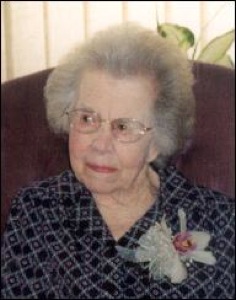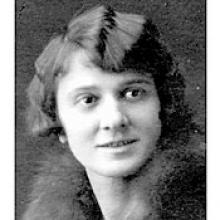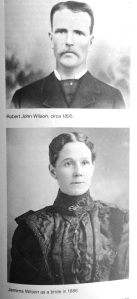AN ‘ANNOYANCE’ OF NIGGLES, THREE REMARKABLE WOMEN, AND A DASH OF COLD, HARD REALITY

Author’s Foreword: Some readers will be relieved to learn that today’s blog does not involve any fiction. The Devil, having been vanquished one more time, has left the building. Today I explore some ‘niggles’ that go back a very long way, reveal some of my memories of three remarkable women, leave me thirsty for more knowledge and finally, force me to face facts about the life expectancy of Persons with Parkinson’s (PwP.)
Niggles
Have you ever had a little ‘niggle’ in your brain – a thought or thoughts so persistent that you end up spending far too much time and attention to seemingly inconsequential details? Well, I have. In fact, I have several niggles at the moment. I am not sure what the collective noun for a niggle is, or ought to be. Perhaps it is an ‘annoyance’ or a ‘persistence.’ (See Note 1) Anne, the person who knows me best (too well I would argue) undoubtedly would affirm that I need no encouragement to pursue the most inconsequential of niggles.
Today, I reveal a few niggles that seem to form a straight line – a rare thing sometimes. I consider none of them to be totally inconsequential but they are hardly breaking news either. This ‘annoyance’ of niggles have been sitting in my mind in various forms for a long time and now, finally, it is time to examine them in the cold hard light of day, as they say.
Regular readers of this blog know that I frequently write about a small community called Altamont in southern Manitoba – a place that I often call home even though in many respects “there is no there, there” anymore as a former colleague is fond of saying. It is probably more accurate to say that it is really a “time and place” that I call “home.” In any case, I carry a few niggles from that time and place and the ones that carry the greatest weight reference one or all of three remarkable individuals. I guess there is no better way to begin than to introduce the first of these three people – a woman who influenced at least three generations of students in Altamont’s school – Miss Mary Armitage.
Mary Isabel Armitage
- Born: March 12, 1902 New Haven District, Manitoba
- Died: February 21, 2005, Manitou, Manitoba
- Taught in Altamont: 1924 to 1962. Lived there most of her life
- Awards: 1970 Manitoba Centennial Medal for her many years in the teaching profession and her activity in community affairs.
In my last blog on The “Stuff” of Curling I incorporated a highly fictionalized role for Miss Mary Armitage as the neutral arbiter in resolving a matter with the Devil. You will be relieved, I am sure, to know that this piece contains no fiction and no reference to the Devil beyond the fact that the Devil has left the building. However, since I wrote the curling series some particular memories involving Miss Armitage, the erstwhile long time teacher in the Altamont School and my teacher for three years, have re-surfaced.
Where to start? Well, Miss Armitage was my teacher for Grades 1 – 3 and she was the teacher for everyone who attended Grades 1 – 3 at Altamont School for 37 of her 41 years of teaching. There was no kindergarten (junior or senior) so Grade 1 was a very big deal. Come to think about it, there was a very long six-year waiting list to get into the program. Once I got there, I remember liking school well enough in those early grades but there were two or three situations that still niggle.

Mary Armitage Photo: Unknown
Our desks were double desks, intended for two students. The gray painted wooden desktops opened to reveal an unfinished interior cavity into which we thrust our textbooks, foolscap paper, pencils and sometimes lunches and snacks. We were not allowed to write with fountain pens or ballpoint pens until much later. The interior cavity always smelled like… well … like an interior cavity – a mix of wholesome natural fibre goodness and musty, stale fibre badness with just a hint of carrion. Interior cavities seem destined to be the spaces where a process of transformation from goodness to badness happens. In any case, the desktops and seats held together by designer metal desk frameworks would be prized items today.
Gender stuff
I am not certain how many children rested their bums on those seats before I arrived but the evidence indicates that the number was much higher than I could count in Grade 1. While the desk tops and seats had been sanded and painted regularly the evidence of earlier children persisted in the vague outlines of their initials and other personalized scratching.
I was in Grade 2 when Bill and I were assigned to sit together in one of those double desks. By the way, being able to sit with Bill was a huge relief to me because the previous year, on my first day of school in Grade 1, I lined up outside the main entrance to the school with the other Grade 1 pupils and we were ushered into the classroom to sit in our “new” desks. It was a bit scary for a shy young lad and I remember not remembering anything I was supposed to remember and getting into some trouble. It was either just too exciting and I freaked out over the pressure of not knowing what the expectations were, or alternatively, I was just another dumb kid who couldn’t retain anything in his distracted mind. I still haven’t figured out which one is the most apt description of my mind on that day. Okay, maybe some of that state of mind continues today, as I seem to have rambled a bit.
The classroom was large enough (or the class sizes were small enough) that Grades 1 – 3 were all taught in the one room. On that first day of Grade 1, Miss Armitage was careful to segregate us by gender, two boys to a desk and two girls to a desk, as she made seat assignments. I know that many of you are gasping at this arrangement and I fully recognize that in the present day world the class would have been divided into gender equal desks with one boy and one girl per desk promoting a new comfort level and equality between genders. But this was not the case in my early schooling – hey, I didn’t even know the meaning of “gender!” As it turned out that there were an odd number of boys and girls in the class. Oh no! A boy and a girl would have to share a double desk and (foretelling much of my life, if there was any chance that something would happen to embarrass me, it would happen,) I was one of the chosen. My desk mate was Shirley May.
I hasten to add at this point that Shirley May must have been totally horrified at the prospect – no, reality – of spending the year next to a shy, stinky fellow such as me. In any case I recall her as being a pretty little girl, delightful in every respect. I don’t recall being mean to her in any way but I might have suppressed those memories and if I was mean, I make my apologies now. Equally, I am certain that any embarrassment to me in any other interaction(s) with women over the years is purely coincidental and unrelated to the seat assignations. [And I am not going to pay high figures to a shrink to figure this one out, both literally and figuratively speaking!]
My engraving career
Now, back to Grade 2 where my desk mate was Bill. Not nearly as cute as Shirley May but more my type if you know what I mean. Bill was always Bill and never Billy or William or Willie. Bill was Bill … until he became “Skull” that is. Bill and I sat in that double desk and proceeded to contribute our own pungency to the interior cavity. It’s “nose” might have been described as aged oak with a dark undercurrent of fountain pen ink tinged with fuzzy salami sandwiches capped with blackened bananas. In any case, it was a cavity worthy of commemoration.
Bill and I (mostly me though, I am afraid) proceeded to use some implement – I am not sure what we used but we were as creative as the most hardened lifer in prison when it came to handcrafting shives and other necessities away from the prying eyes of the guard (Miss Armitage) – to carve our initials into the painted desk top. Gasp! Even though Miss Armitage did indeed have eyes in the back of her head, she found it hard to keep those eyes on 35 or so children at once. Or perhaps, she just prioritized. Nevertheless, we were found out of course. Not only was the artistry in plain view but we had signed our work. We were roundly chastised and punishment was meted out. It is funny but I don’t remember exactly what the punishment was. Nonetheless, a lesson learned and this effectively marked the end of my engraving and graffiti career – that and the fact that I never developed an attractive stylized tag line.
The Plasticine Age
But there are more niggles when it comes to Miss Armitage and my own shortcomings. There was an occasion in Grade 1 when Miss Armitage had to step out of the room for a brief moment. It happens, I guess. Is it even a question that the class would take advantage of this unforeseen moment to engage in some tomfoolery? She was not out of the room more than 10 seconds when erasers and pencils were flying, punches were delivered to the shoulders of our desk mates (but not to my desk mate Shirley May.) I had a long rope of Plasticine rolled out at our desk. I took the opportunity to twirl it like a lariat and it was then that I learned that Plasticine does not have the physical proprieties of good sisal. In fact, it is a very poor substitute. A chunk of Plastiscine broke loose and flew with great precision into the crockery vessel of the water fountain at the back of the room.
[Note: Plasticine is the trademark name for a type of modelling clay invented over 100 years ago by William Harbutt in England. Artists, engineers, architect, model builders, children and many others use it for various purposes. To my knowledge, lariat making is not one of them. Play dough was not yet in widespread use in schools and Plasticine was often the only option.]

Plasticine, ours was mostly gray. It all ended up gray anyway.
I am not sure who snitched but in a room of 30 or so pupils in Grades 1, 2 and 3 there is a least one snitch, and that one snitch snitched. Well … s/he half – snitched and told Miss Armitage that there was a piece of Plastiscine in the water fountain. Somehow Miss Armitage knew it came from the Grade 1 class and she marched us all back to water fountain and demanded to know who put it in there. It was the most pressure I have ever been under! It haunts me to this very day – maybe this is not just a niggle after all? Maybe I should be on the psychiatrist’s couch trying to interpret my action… well… inaction really. You see, I never owned up to the fact that I tossed my lasso into the water fountain. She repeated the question several times and each time I retreated farther away from the truth. Maybe I was incorrigible. Maybe I couldn’t accept responsibility. Maybe I was embarrassed. No matter, I never let on and no one openly named me. Miss Armitage, probably sensing that there was no useful outcome from this standoff, retreated. Those of you who know me (and for that matter those who don’t know me) will undoubtedly pass some judgment on this showdown at the water fountain. As for me, I have come to terms with the fact that while it is a niggle, it does reveal that I was not as honest as George Washington was about cutting down the cherry tree. But who among us is that honest?
[Note: Now I learn that the cherry tree story about George Washington is a myth invented by Mason Locke Weems, one of Washington’s first biographers. Hmmmm… I think that just means that George Washington and I are equally honest – he (if he were alive) would now deny cutting down the cherry tree just as I did not own up to the Plasticine incident.]
I would like to say that this ancient history from the Plasticine Age is the last niggle about Miss Armitage, but it is not. Somehow, I passed through the lower grades with little further difficulty. I must have kept my nose clean as they say and Miss Armitage must have seen fit to cast a blind eye toward my indiscretions. (I don’t recall that there were any, but let’s be realistic; there likely were a few.) Everything was uneventful until sometime in Grade 4, I believe. In 1958 the Sylvan School merged into the Altamont school and students from Sylvan began attending school in Altamont. The Sylvan schoolhouse was moved and positioned behind our two-story four-room school to create a new ”portable” although it wasn’t called a “portable” in those days. Miss Armitage’s Grades 1 – 3 classes were moved into Sylvan.
Knock a Door Ginger

Sylvan School before it was moved to Altamont as a “portable.” Photo: Memories of Lorne, 1880 – 1980
I am not sure what got into us but a few of us guys (no girls were involved) decided it would be fun to run up to the side door of Sylvan, knock on the door and then run away, repeatedly. This was a game we often played in Altamont under the cover of darkness. We called it “Knock a Door Ginger.” Why we called it that I am not sure but in retrospect it was appropriate given my red hair. [I have heard it called ”Knicky Knicky Door Bell” in other places.] In any case, the key words here are “under cover of darkness.” We seldom got caught in town because we knew every little nook and cranny within which to hide and every little interstitial space to run through even in the pitch dark. But at school, we hadn’t figured out that the bright, sunny sky and wide-open spaces of the schoolyard did not provide much protection from detection. Indeed, we were detected and apprehended without much difficulty and marched unceremoniously (or maybe it was with great ceremony) up the large wooden staircase of the main school, our shoes making a conspicuously loud “thump, thump, thump,” to the Principal’s desk in his home classroom on the second floor.
I really don’t remember who the other culprits were but I could guess if I had to name them … but I won’t. I am certain that facing the Principal was daunting but I don’t recall much except that time seemed to pass quickly from the reading of the charges, to the pleas from the alleged perpetrators, to the verdict and subsequent sentencing. At the plea stage there was a brief opportunity to offer explanation or other pertinent information. As I recall there was no explanation or information of any pertinence and certainly none with any impertinence. It was a two-part sentence: three whacks of the strap across the palm of the hand administered individually (not so bad, I thought) and an apology to Miss Armitage, delivered individually (Whoo boy! Mortification!) The strap was of no consequence and no further mention of that event need be made here.
On the other hand, the apology to Miss Armitage was one of the more difficult moments of my life – right there with the earlier Plasticine incident. But I knew I wouldn’t be able to duck this one. I am quite sure Miss Armitage was not in favour of corporal punishment so I don’t think she smiled over the meting out of that part of the sentence by the Principal. She was not in attendance at its execution. However, I am quite certain she allowed herself a wry little smile as I exited later after my clumsy, yet sincere, apology about the Knock a Door Ginger incident, in the confines of the Sylvan schoolhouse.
Is that the last niggle involving Miss Armitage? Almost. I can hear you saying, “What?” Please be patient. A little more water has to flow under a few other bridges before we can close out the last niggle about Miss Armitage.
We need to meet a second remarkable individual, Mary Anne (Straube) Scoles – a person who survived and lived to tell of a good life. Aside from gambling she had few vices but she loved Las Vegas and made many trips there over the years. Her son reports that in the wee hours of the morning on a such a trip when she was in her nineties, she was heard to mutter, “I didn’t come to Vegas to sleep!”
MARY ANNE SCOLES (née STRAUBE)
- Born: December 25, 1896 at home in Treherne, Manitoba
- Married: Mike Scoles
- Died: July 23, 2007 at the Treherne Personal care Home
- Mother Bridget Straube died from tuberculosis 10 days after Mary Anne’s birth.
- Father: Joseph Straube
When I was quite young, we would often visit the Scoles’ homestead (1902) farm a few miles north of Altamont just before you made the turn to St. Lupicin. I notice on some maps that this road north from Altamont is named Scoles Road. We never referred to it as such but it makes sense that it would be. Mike Scoles and his wife, Mary Anne, lived there with their four sons (Joe, Jack, Pat and Ted.) I also have this vague recollection that the reason dad would go to the Scoles’ farm was to give someone a haircut and possibly a shave. Perhaps, there was an elder Scoles in residence as well or maybe it was that Mike was a wee bit older than Mary Anne.
I must have been under ten years old as Mike and Mary Anne Scoles retired off the farm in 1960. While I have only snippets of memory about the Scoles’ farm, some things stand out clearly such as the almost secret nature of their farmyard. You had to watch carefully as you searched for the left hand turn into their lane. The brush and trees seemed to be perpetually overgrown, forming a canopy through which you pushed your way to gain admittance to a clearing. It took another second before you noticed the house tucked discreetly into the brush on the right hand side, forcing you to relinquish the idea that this was an abandoned farmyard. Mrs. Scoles always seemed to be there and greeted us openly and kindly – and the oatmeal cookies always met with my approval.
In those days, my father and mother often took Sunday drives weaving their way across the back roads. My mother was seeking some respite from one overly energetic son and one newly arrived daughter. My father, true to the central character traits of the Marshall family, loved to look at the crops, wildflowers and other vegetation, and the natural land forms of the area. A stop at the Scoles’ farm was often on the route. Even after they retired to Treherne, we would sometimes stop at their little house on a Sunday afternoon.
It was apparent that dad and mom were fond of the Scoles’ family. I believe that dad and Joe Scoles were friends of a sort. Joe would arrive on the bus from Winnipeg and Dad often drove him home. I recall dad loved to have discussions with Joe that were more “in depth” than most discussions he had with others.
But the real story in the Scoles’ family is the story of Mary Anne Scoles herself. She weighed a mere 2.5 pounds when she was born on Christmas Day 1896 to Joseph and Bridget Straube. Bridget had tuberculosis and died 10 days later. Remarkably for the time, Mary Anne survived both her small birth weight and the possible complications of the tuberculosis. Perhaps, this survival was facilitated by her parents who were devote in mind and spirit. Bridget and Joseph Straube, after learning of the pregnancy and the risk to their child, travelled by train to the miracle shrine at the Basilica of Sainte-Anne-de-Beaupré near Quebec City (established in 1658) to pray that their child would have a long and healthy life. The Straube’s prayers were answered.

Mary Anne Scoles Photo: Winnipeg Free Press Passages
Mary Anne was educated in Treherne and Winnipeg but moved to the Scoles’ farm north of Altamont when she married Mike Scoles. I am not certain of the date of their marriage but it was likely around 1918. They farmed the Scoles’ original homestead at SE 5-6-8 established in 1902 until 1960 when they retired to Treherne. Mike died in 1981.
So, what is niggling me about Mary Anne Scoles? Is it that she lived to be 110 years, 6 months and 28 days old? When she died she was the oldest Canadian living in Canada. This was quite an achievement – especially given her less than weighty entrance into the world! No, that is not what is niggling me although it is related.
I must make one last introduction, meet Jemima (Holliston) Wilson, the third remarkable woman in this story. She was known to everyone outside of her family as “Aunt ‘Mime.” Within her family circles, she was addressed by her proper title.
Jemima (née Holliston) Wilson aka “Aunt ‘Mime”
- Born: May 16, 1862 Merrickville, Ontario
- Died: January 9, 1965 Manitou, Manitoba
- Married: 1886 in Merrickville to Robert Wilson
- Robert Wilson died: 1896
- Father: George Holliston
- Mother: Catherine (Katie Mussell]
Aunt ‘Mime was an old woman from the time that I first remember her. I know that when we are young we think everyone between 30 and 90 is in the same category of “old.” But Aunt ‘Mime really was old. My first memories of her are from when I was about five years old and she was nearly 91 years young. In her nineties, she lived independently in a small house at the northwest corner of town almost beside my friends, Kelly and Terry. Often, we would find ourselves over at Aunt ‘Mime’s scrounging a biscuit, or better yet, a slice of fresh baked bread liberally spread with margarine (uncoloured white margarine as its producers and distributors were not permitted, by law, to colour the margarine to protect the dairy industry) and with any kind of luck, some jam. Funny how I didn’t like uncoloured margarine when we had it at home or when local bachelor and retired farmer Ed Bulmer served it up in his little house, but there was just something about Aunt ‘Mime’s bread and margarine that appealed. Maybe it was the ambiance of her kitchen and the smells emanating from her old wood cook stove.
To be clear though, any niggle I have about Aunt ‘Mime has nothing to do with my inherent nature as a child terror or brat. We would never play “Knock a Door Ginger” on Aunt ‘Mime. We just knew that not only was she old, she was ‘special old’ and that particular status of old was enhanced with each passing year. Living independently until one is almost 100 years old is a remarkable achievement indeed. I recall that she was always spry of mind as well as body.
Aunt ‘Mime passed away January 9, 1965 just short of her 103rd birthday. In the course of her lifetime she witnessed major societal changes e.g., the advancement in transportation from horses to stagecoach to horse and buggy to locomotives and trains to trucks and automobiles to airplanes to space travel. Technology in communications grew from pony express and stagecoach to telegraph to radio to television to the beginnings of a wireless Internet age.
Remarkable as the magnitude of these changes may seem, there were other social and political developments that are just as remarkable, not for speed of implementation or for the magnitude of change achieved during a short span of time, but for the tortoise-like speed with which they were introduced and accepted. Here, I am referring specifically to the introduction of rights of democratic citizenship for women, and racial and ethnic groups. Political and social change involving Canadian women’s suffrage, economic equality and human rights over the 100-year period coinciding with Aunt ‘Mime’s life, and indeed for fifty years after her death, plodded along at a snail’s pace.
Recall that Aunt ‘Mime was born in 1862, five years prior to Canadian Confederation. One niggle I have is really a questioning niggle: What were things like for women in this pioneering time? The answer is not straightforward obviously but I have constructed a timeline set against the milestone markers of the lives of Jemima Wilson, Mary Anne Scoles and Mary Armitage to assist in telling and visualizing part of the story. (See Appendix I for the detailed timeline.)

Robert Wilson (1895) a year before his death. Jemima Wilson as a bride in 1886. Photos: Memories of Lorne 1880 – 1980
Jemima Holliston was 24 years old when she married Robert John Wilson (age 28) in 1886 in Merrickville, Ontario. In 1889 they ventured west to join some of the Wilson clan at Plumas, Manitoba before purchasing (See Note 3) a quarter section of land (NW 21-5-8) about one half mile north of what was then called Musselboro. On November 1, 1891 Mussellboro would become Alta. Station before being renamed officially as Altamont on July 1, 1894.
Homesteading
Unfortunately, Jemima’s husband died in 1896 from causes of which I am not entirely clear. When working from secondary sources it is best not to ascribe accuracy to data or to jump to conclusions too quickly. I prefer to have two or three unrelated sources to corroborate the data before proceeding tentatively. Consequently, I have not been able to verify the cause of Robert Wilson’s death but I am certain that it was tragic as he was only 38 years old at the time. Nevertheless, Jemima at age 34 had to carry on and she applied to homestead the NE quarter of 21-5-8 in 1898. The question is: how was she able to do manage this?
At the time, there was very little legal protection for women under British common law and married women could not own property. Indeed, in 1885 the Manitoba government actually eliminated the need for the wife’s permission before a husband could sell or give away farmland. Even so, the Dominion Land Act (1872) had created a Homestead Act where for a fee of $10.00 a person could claim a quarter section (160 acres) of land provided that the homesteader would establish a permanent residence and reside on the land for at least six months of the year, breaking 40 acres over three years. A second adjacent quarter costing $2.00 or $2.50 per acre, could be reserved for a total of a half section or 320 acres.
Fortunately for the widowed Jemima (if one can be fortunate in such a situation) the Act allowed widows, divorced women and separated wives with children under 18 to homestead land although married women were prohibited from doing so. As I review the facts, she was one of the few women pioneers who had her name on title of a homestead quarter section near Altamont. Martha Castle (of whom I know nothing) is also listed as homesteading NE 22-5-8 (1893) about a mile to the east of Jemima Wilson. They are the only two women owning property (both homesteaders) in that particular Range of the Township. They may have benefited from this little bit of ”good” fortune, but these women, with no husbands, must have found it challenging to say the least in a world designed in general to favour men and to discriminate against women. And homesteading was no easy challenge for anyone, man or woman.
At the time of her husband’s death in 1896 Jemima was 34 years old and raising five children who were twelve years of age and under, (her husband’s niece Sarah Evelina Rathwell b. 1884 in Merrickville; Howard Franklin b. 1888 in Merrickville; Mabel Winifred b. 1890 in Altamont; Mary Edith b. 1893 in Altamont; John Robert b. 1895 in Altamont.) I wager this must have presented a daunting future and undoubtedly speaks to the resourcefulness and tenacity of her personality and the strength of her spirit.
Her grandson Gordon credits the support of her kin and neighbours as being critical to survival for Jemima and her children. In addition, the entire area was being settled and immigrants from France, Brittany and Normandy arrived to farm near St. Lupicin, a few miles to the north. She made friends with many of these families and they exchanged goods as need be. Jemima and her children benefited from bread baked in the French tradition and in return she provided an indoor haven from the elements when the St. Lupicin families walked past her farm in all weather conditions on their way to St. Leon for church services.
Aunt ‘Mime farmed the original homestead until 1925 when her son, John (“Jack”) Robert, returned with his wife, Eva Lyle and family to work the farm. Aunt ‘Mime moved into a small house in Altamont soon after. The farm served as a base from where Jack worked at different jobs in mining and construction in Northern Ontario, and trucking and grain handling around Altamont. In 1964 at age 69 and just before Aunt ‘Mime passed away, Jack retired and his son Glen took over the farm. Jack and Eva raised seven sons and one daughter on the original homestead
I have only just scratched the surface of Jemima’s life. I have written this piece very much as a personal retrospective reliant upon my own memories and secondary source material. As such, I do not have (nor have I asked for) access to papers or documents or other original communications that provide insight on social, political or economic life from Jemima Wilson’s perspective. This blog piece was not conceived originally to be a research piece. But I am getting ahead of myself as usual.
Final niggles about three women
I have some final niggles, about Aunt ‘Mime, Mary Anne Scoles and Mary Armitage – ones that stem from my curiosity being piqued as to what the three of them would say (individually and collectively) if they were asked to participate in a discussion (the three of them) about their lives, their experiences and their views regarding technological, social and political changes over their collective lifetimes. Mary Anne Scoles and Mary Armitage were more closely contemporaries and Aunt ‘Mime was the elder pioneer, so to speak. It almost makes me shiver to think of the richness of such discourse.
The first niggle is that it would be amazing to have the opportunity to interview Jemima Wilson, Mary Anne Scoles, and Mary Armitage – individually or ensemble. I have so many questions I would like to ask. Impossible I know. Aunt ‘Mime died in 1965; Mary Armitage in 2005; Mary Anne Scoles in 2007.
The second niggle is to be able to have access to original documentation from these three remarkable women such that we could understand their perspectives on surviving as women in those times, and their thoughts on the social, economic and political directions that were unfolding around them. Who knows? Perhaps in the future I will be fortunate enough to access such documents or accounts. Or perhaps someone else will have the good fortune to do so. I hope so.
The third and biggest niggle

Mary Armitage lived in Altamont; Jemima Wilson farmed 1/2 mile north; Mary Anne Scoles farmed about 4 miles north. Red dots indicate the locations.
But the biggest niggle I have is that these three Manitoba centenarians resided for a large portion their lives on a 4-mile straight line of each other. And I knew each of them – not as a close family member would have, or even as a close friend would have, but well enough to have personal memories. I find this astounding. I asked earlier: How many of us can say we have ever known someone who lived to be 100 years old? Not that many, I wager. How many can say that they have very personal memories and ‘niggles’ about three such remarkable individuals? Not that many I wager, but I am one.
Three roses for three prairie women
As we come marching, marching, we bring the greater days.
The rising of the women means the rising of the race.
No more the drudge and idler—ten that toil where one reposes,
But a sharing of life’s glories: Bread and roses! Bread and roses! – 4th verse Bread and Roses, lyrics by James Oppenheim, circa 1911.
I have no reason to believe that Jemima Wilson, Mary Anne Scoles or Mary Armitage would have supported trade unions as the political vehicle for achieving women’s democratic rights, economic security and equality. After all, Jemima was born in and grew up in Merrickville in the heart of conservative Ontario. Mary Anne Scoles and Mary Armitage were born in and grew up in the heart of conservative Manitoba. Still, I believe that they would agree that the goals of the women’s movement were worthy of the struggle and would have counted themselves as part of the wave of women who fought not only for bread but for roses in the 19th and 20th Centuries.
Just for fun, I have chosen three roses that I think are appropriate to accompany these three remarkable Manitoba women in this story.
1) Adelaide Hoodless
Adelaide Hoodless (February 27, 1857 – February 26, 1910) worked, after the death of her young son, to reform education for new mothers to include hygiene, cleanliness and frugality. Hoodless is credited with being the co-founder of the Women’s Institute, the National Council of Women, the Victorian Order of Nurses, and the YWCA in Canada. Her educational reforms led to the formation of faculties of Household Science (later called Home Economics and then Human Ecology or Family Studies.) The proof of the magnitude of her legacy is in the fact that these organizations still exist today.

Adelaide Hoodless (Dr. Henry Heard Marshall, 1972) Photo: unknown
The rose, Adelaide Hoodless, is a very vigorous shrub introduced in 1973 by Dr. Henry Heard Marshall as a tribute to the founder of the Women’s Institute on the occasion of the 75th anniversary of the Institute.
2) Morden Centennial was introduced by Dr. Henry Heard Marshall in 1980 to commemorate the centennial anniversary of the Town of Morden, Manitoba. It seems appropriate to include it here as each of the three women in this story lived to be more than 100 years old and Morden is a near neighbour to Altamont in modern day terms. Morden Centennial is one of my personal favourites and we have it as a mainstay in our garden. It flowers repeatedly throughout the summer with amazing, almost florescent flowers.

Morden Centennial (Dr. Henry Heard Marshall 1980) Photo: The PD Gardener 2013
3) The Manitoba countryside is dotted with patches of wild roses (Rosa woodsii, Rosa acicularis or Rosa arkansana) with their prickly branches catching your clothes as you scramble through the fence line on your way through a “shortcut” from one place to another. The three heroines in this story would be attracted to the mass of flowers on display and the simplicity in the structure of each blossom. The complexity of hybridized roses we know today was not only far into the future but would have been out of budget range and practicality for someone like Jemima Wilson and Mary Anne Scoles for certain and likely for Mary Armitage as well.
Wild roses though live on in unlikely spots around the prairies and the three women I have highlighted today exemplify their beauty and tenacity.

Wild Rose Photo: Canadian Wildlife Federation
Life Expectancy: The dash of cold, hard reality
As I said, I have had the privilege of having personal memories of three quite remarkable women who each lived to be more than 100 years old. Of course, this inevitably leads to the question: can I expect to live to be 100 years old?
It seems that the average age of the population is on a slow but steady increase. Each generation can expect to live longer than the previous one. Technological advances in medical diagnostic equipment; improved and more efficacious drug therapies; improved medical devices enabling us to have a better quality of life; a better understanding that ‘quality of life’ really means attention to the wholeness of body, mind and spirit; mutually supportive relationships with family and friends; and social participation in community life along with respect for Nature, have all contributed to positive outcomes. Still, the challenge will be to continue the trend to increased longevity.
But, can I expect to live to be 100 years old? The short answer (also called the realistic answer and the pessimistic answer) is “no.” The equivocating answer is “not likely.” The cheer leading, supportive, optimistic and the ‘you are a fighter’ answer is “of course we can live even longer.” My answer is that we need all of these answers to support us, as the occasion demands.
In Canada only 0.8% of the population is over 90 years of age (0.4 % for males and 1.1% for women.) So, how many of us will ever get to say, “I am 100 years old?” Becoming a centenarian is really quite an exclusive club. In 2011, there were only 5,825 people in Canada who were 100 years of age old or older and for this year (2016) it is estimated that 7,900 people, more women than men, will be in that illustrious group. As I write this post, the oldest Canadian living in Canada is Ellen “Dolly” Gibb of North Bay, born Ellen Box in Winnipeg on April 26, 1905. She is 110 years 351 days.
So, I ask the question again, slightly differently this time: What is the probability that I will live to be 100 years old and would I bet on the outcome? Silly me, when it comes to my own life, I am betting on the outcome every minute of every day. I am betting I will live. I know there is a way to calculate that probability but in the end that is a matter for actuaries and gamblers. I am sure that this is a gross oversimplification of what actuaries do but they make estimates of probable outcomes using available relevant data, extrapolating from past patterns. In order to do that, they have to make assumptions. Believe it or not, I have participated in some extremely interesting debates and arguments on these assumptions in real life collective bargaining situations. I guess it wouldn’t surprise you that actuaries are mostly quite conservative in their assumptions and their estimates. On life expectancy they know, quite correctly, that you will die, and they will assume that you will die sooner rather than later but later than others died previously, if you know what I mean. They are pessimistic in an optimistic kind of way – you might say they see the glass as being half full except for the fact that they know that for any given individual, the glass will be bone dry empty at some point.
Gamblers, the good ones at least, employ much the same fundamental process. They look at the available information and make some informed choice (educated guess) as to the outcome of an event e.g., Smarty Jones to win the Kentucky Derby in 2004 (he did) or the North Carolina Tar Heels (2.5 point betting favourites) to win the 2016 NCAA Championship – they didn’t as they were upset by the Villanova Wildcats. You can gamble on anything e.g., lottery tickets (the odds are very high against winning the big prize) or whether the next child born to the Royal family is a boy or a girl, or whether it will rain in Birmingham, Alabama on October 21, 2016. I haven’t actually checked this last one out but I am sure you can find a bookie somewhere who will take that bet, one way or the other. For the record, it did not rain in Birmingham on October 21, 2015 and that day was the 11th day of a long dry spell.
Okay then. So both actuaries and gamblers will agree that I will die. But if they are betting on when I will die (the actuary because she works for a life insurance company and the gambler because he has a gambling addiction and will bet on anything if someone will take the bet and give him odds,) they will want more information. Life expectancy is one such piece of information. And because I have Parkinson’s disease they will want to know if the life expectancy for someone who has Parkinson’s is different from someone who does not have Parkinson’s.
Life expectancy with Parkinson’s disease
Put most bluntly, if I have Parkinson’s disease, is my life expectancy shortened? Well, theoretically a Person with Parkinson’s (PwP) can live a good long life after diagnosis. As Parkinson Canada says
Depending upon your age of onset, how you manage the symptoms, and your general health, you can live an active life with Parkinson’s. In most cases, one’s life is not shortened. However, as you age and as the disease progresses, there will be increased risks. For example, impaired balance can lead to falls; swallowing problems, if not managed, can lead to pneumonia. Parkinson’s is known as a chronic (long term) condition that will require ongoing monitoring and management to maintain one’s quality of life.
It seems that the best that can be said is that whether you have Parkinson’s or not, there are always risks in life, aren’t there? In other words, there are many variables and while having Parkinson’s is just one such variable, it is a variable that brings more associated risks with it. Doesn’t that mean that your life expectancy is decreased, or put another way, the probability of dying increases? It seems to me that it does. I wish it didn’t, but it does. So, let’s not beat around the bush.

How badly are the cards stacked against me? Photo: The PD Gardener
But don’t misunderstand; it is not defeatist to say that I am in a higher risk group. It would be defeatist though if I were to say that I am no longer going to strive to live as healthy and as long a life as I possibly can, just because I am in a higher risk group. I do not mean to say that anyone living with Parkinson’s should not try to achieve the best quality of life possible. It is at this point that we need the cheerleader to jump in (Zis, Boom, Bah – Two, four, six, eight; who do we REALLY hate? Parkinson’s, Parkinson’s, Go PwP!)
I am not going to get hung up on semantics or matters of definition here. I believe that because I have Parkinson’s, my life expectancy is lower. Empirical research seems to support my position.
The calculations showed that LE (Life Expectancy) and AAD (anticipated age at time of death) in PD are reduced for all onset ages but this reduction is greatest in individuals with a young onset. (See Note 3)
Similarly,
Our findings confirm that PD is associated with increased mortality in both men and women. Unlike the majority of other mortality studies, we found that women have a greater reduction in lifespan compared to men. We also found that patients with early onset PD (onset at the age of 50 or before) have reduced survival relative to PD patients with later ages of onset. A final important finding is that survival is equal in PD patients treated with levodopa early (within 2 years or less of PD onset) versus later. (See Note 4)
However, the good news is that if you have Parkinson’s and do not have dementia and are not in the young onset group, life expectancy and age at time of death are more likely to approach that of the normal population.
The survival, LE and AAD in patients with PD are much lower compared with the general population, apart from those patients who do not develop dementia, who appear to have near normal population mortalities. However, dementia and younger onset of PD appear to be important determinants of survival, LE and AAD. (See Note 5)
So, there is a bit of good with the bad … but not that much. Is there anything to be done except be depressed? Of course there is! We have to get on with the task of living.
We need to be careful not to assume that each of us will follow precisely the same pattern. Probabilities are probabilities because they are not certainties. A tautological argument sure but no one can accurately predict when any given individual will die under normal circumstances or even under circumstances where the individual has Parkinson’s. The wonderful thing about statistics is that there will always be a mean or an average (it keeps shifting as the population changes and there will always be people who are far away from the mean.) Yes, I know this means both to the negative and to the positive sides. Some people will live longer than expected and some people will not live as long as expected. These facts will never change. Our challenge is to do everything we possibly can to shift the statistical result to the positive for our own individual selves.
Think of Mary Anne Scoles who, in 1896 in a home birth, survived her low birth weight (2.5 pounds) and the fact that her mother had tuberculosis. How high would the odds have to be for you (assuming you could live long enough to collect) to bet that she would live to be 110 years, 6 months and 28 days old? But she did. I can’t help but wonder how successful she was in her Las Vegas trips, and if she would have lived longer if she slept more in Las Vegas? I doubt it. Fun is a key criterion for longevity – at least I am betting that it is!
In some ways we must be selfish. Treat each day as a personal best and do whatever is necessary to reach the new personal best tomorrow.
When I die, no matter how or how soon, I fervently want my family and friends and those who knew me in any capacity to understand that my passing will not be a personal failure but merely the end of a long stretch of personal bests. On the statistical side, when I die I hope that my string of personal bests will have pushed (however slightly) the overall average or mean upward and that I have left some mark on the world to assist others to reach and surpass my goals, setting their own high watermarks. At the macro economic, social and political levels, the capacity of all systems, (economy, heath care, social security, social policy, political advocacy, etc.) must be strengthened and expanded to support an enhanced quality of life for Persons with Parkinson’s, their families and caregivers.
And, finally: No, I am not depressed.
APPENDIX I
Timeline of Women’s Rights in Canada referencing the Lives of Three Remarkable Women: Jemima (née Holliston) Wilson aka Aunt ‘Mime , Mary Anne (née Straube) Scoles, and Mary Armitage
1862 Jemima Holliston is born
1867 Jemima Holliston is 5
- Canadian Confederation
1871 Jemima Holliston is 9
- Manitoba’s Act Respecting Married Women allows a married woman to keep ownership of her property, but any wages she makes goes to her spouse.
1872 Jemima Holliston is 10
- Dominion Land Act and Homestead Act is passed entitling a person to claim, for a $10.00 fee, a quarter section (160 acres) on even numbered sections provided that the homesteader reside on the land for at least six months of the year, establish a permanent residence and break 40 acres over three years. A second adjacent quarter costing $2.00 or $2.50 per acre, could be reserved for a total of a half section or 320 acres.
1884 Jemima Holliston is 22
- The Married Women’s Property Act gives married women in Ontario the right to make legal agreements and buy property, the same as for men.
- Women in Manitoba gain the right to vote in municipal elections but are not eligible to run for municipal office until 1917. This is one small step forward with a more than offsetting large step backward.
1886 Jemima Holliston is 26 and marries Robert John Wilson in Merrickville, Ontario
1890 – 1920 Jemima Wilson is 28 – 58
- This is a period of intense activity by the Suffrage movement. Women such as Emily Murphy, Nellie McClung, Irene Parlby, Henrietta Muir Edwards and Louise Crummy McKinney (the “Famous Five”) as well as Agnes MacPhail, Erland Lee, Adelaide Hunter Hoodless among others were active advocates for women’s Suffrage and other rights.
1890 Jemima Wilson is 28
- Women ratepayers in Manitoba can vote and hold office at the school board level.
1896 Jemima Wilson is 34. Mary Anne Straube is born in Treherne, Manitoba
- Jemima Wilson’s husband, Robert John Wilson, dies.
1898 Jemima Wilson is 36. Mary Anne Straube is 2.
- Jemima Wilson applies for a homestead on NW 21-5-8 north of Altamont.
1900 Jemima Wilson is 38; Mary Anne Straube is 4.
- Manitoba passes its own Married Women’s Property Act giving married women in Manitoba the same legal capacity as men. [See Note 6]
1902 Mary Armitage is born
- The Scoles’ homestead was established at SE 5-6-8.
1908 Mary Armitage’s family moves to Altamont from New Haven. Mary (6) is the second oldest of 4 children. Five other children are born after moving to Altamont.
1914 – 1918 Jemima Wilson was 52 – 56; Mary Anne Straube was 18 – 22; Mary Armitage was 12 – 16
- World War I
1917 Jemima Wilson is 55; Mary Anne Straube is 21; Mary Armitage is 15;
- The Military Voters Act allowed nurses and women in the armed services to vote.
- The Wartime Election Act extended the vote to women who had husbands, sons or fathers serving overseas.
- Women in Manitoba are the first in Canada to gain the right to vote and run for office in provincial elections.
~ 1918 Mary Anne Straube marries Mike Scoles
1920 Jemima Wilson is 58; Mary Anne Scoles is 24; Mary Armitage is 18
- Dominion Elections Act is amended permitting every eligible Canadian over 21, male or female, to vote in federal elections, excluding Aboriginal peoples, Inuit or anyone barred from a provincial voters’ list, including Asians and Hindus.
1924 Mary Armitage age 22 begins teaching in Altamont, Manitoba
1929 Jemima Wilson is 67; Mary Anne Scoles is 33; Mary Armitage is 27;
- The Judicial Committee of the Privy Council in England overturns a decision of the Canadian Supreme Court’s “Persons” case and recognizes Canadian women as persons under the law.
1930 Jemima Wilson is 68; Mary Anne Scoles is 34; Mary Armitage is 28
- Montreal’s Cairine Reay Wilson becomes the first woman appointed to the Senate.
1939 – 1945 Jemima Wilson is 77 – 83; Mary Anne Scoles is 43 – 49; Mary Armitage is 37 – 43
- World War II
1940 Jemima Wilson is 78; Mary Anne Scoles is 44; Mary Armitage is 38.
- Women in Quebec gain the right to vote through The Act Granting to Women the Right to Vote and to be Eligible as Candidates – the last existing province to make it legal for women to vote and run for office. However, women from a racial minority already banned from voting in other provinces are still disenfranchised.
1948 Jemima Wilson is 86; Mary Anne Scoles is 52; Mary Armitage is 46;
- A parliamentary committee recommends that Aboriginal people receive the vote, and Inuit are enfranchised. First Nations refused the right to vote as it was conditional on their relinquishing both status under the Indian Act and tax exemption rights accorded by treaty.
1950 – 1960 Jemima Wilson is 88 – 98; Mary Anne Scoles is 54 – 64; Mary Armitage is 48 – 58
- Fair wages, equal pay and fair employment practices legislation begins to be implemented in various provinces
1960 Jemima Wilson is 98; Mary Anne Scoles is 64; Mary Armitage is 58.
- Mary Anne Scoles and husband Mike retire off the farm to live in Treherne
- Canada’s Aboriginal Peoples, including Aboriginal women, are finally granted a ‘no-strings-attached’ right to vote.
- The Canadian Bill of Rights receives Royal Assent
1962 Mary Armitage age 60 retires from her teaching career in Altamont
1965 Jemima Wilson dies a few months short of her 103rd birthday
1969 Jemima Wilson died 4 years earlier; Mary Anne Scoles is 73; Mary Armitage is 67
- Québec became the final province to grant its Aboriginal residents the vote, Canada was no longer denying voting rights to anyone on the basis of racial or ethnic criteria.
1970 Jemima Wilson died 5 years earlier; Mary Anne Scoles is 74
- Mary Armitage age 68 awarded the Manitoba Centennial Medal for her many years in the teaching profession and her activity in community affairs.
|
|
1982 Jemima Wilson died 17 years earlier; Mary Anne Scoles is 86; Mary Armitage is 80
- The Canadian Charter of Rights and Freedoms is enacted as part of the Constitution Act.
1984 Jemima Wilson died 19 years earlier; Mary Anne Scoles is 88; Mary Armitage is 82.
- 100th Anniversary of the founding of the Mussellboro Post Office, the predecessor of Altamont.
1986 Jemima Wilson died 21 years earlier; Mary Anne Scoles is 90; Mary Armitage is 84
- The Federal Employment Equity Act is passed.
1992 Jemima Wilson died 27 years earlier; Mary Anne Scoles is 96; Mary Armitage is 90
- Canadian Roberta Bondar flew in the Space Shuttle Discovery
1993
- Conservative Kim Campbell becomes the first Canadian female prime minister, for about four months
2000 Jemima Wilson died 35 years earlier; Mary Anne Scoles is 104; Mary Armitage is 98
- Beverley McLachlin appointed Chief Justice of the Supreme Court
2004 Jemima Wilson died 39 years earlier; Mary Anne Scoles is 108; Mary Armitage is 102
- Rosalie Abella appointed as the first Jewish woman to sit on the Supreme Court.
2005 Jemima Wilson died 40 years earlier; Mary Anne Scoles is 109; Mary Armitage dies at age 102 years, 344 days
- Canada became the fourth country in the world to legalize same-sex marriage nationwide with the enactment of the Civil Marriage Act
2007 Mary Anne (Straube) Scoles dies at age 110 years, 245 days – the oldest documented Canadian living in Canada at that time.
2010 Jemima Wilson died 50 years earlier; Mary Anne Scoles died 3 years earlier; Mary Armitage died 5 years earlier
- Women in Canada still earn only 75% of what men earn in full and part time employment.
2016 April 2016
- Jemima Wilson died 51 years ago. She would be 151 years old this year
- Mary Anne Scoles died 9 years ago. She would be 119 years old this year.
- Mary Armitage died 11 years ago. She would be 114 years old this year
- 100-year anniversary of Manitoba granting women the right to vote in provincial elections
- Employment equity, pay equity and fundamental human rights for women remain as major issues in Canadian and world affairs.
NOTES
- The word “niggle” has several different connotations. My preferred meaning is “a small minor concern usually over a long period of time, or a slight feeling of misgiving.” However, it can also mean
- Spend too much time on inconsequential details (Dictionary.com)
- Spend too much effort on minor details (Miriam Webster)
- Give too much attention to details usually over a long period of time (Cambridge)
- Find fault continually or to be preoccupied with details (Collins English)
- Cause slight but persistent annoyance (Oxford)
- Screw someone or weasel your way into something (slang – Urban Dictionary
2. In the context of this blog, I would rule out this last definition. I do not have sufficient corroborating evidence to confirm that Robert and Jemima Wilson purchased the NW quarter of 21-5-8 in 1889. One map of Township 5 Range 8 shows James A. Fraser as the owner of NE 21-5-8 (1880.) It may be the case that the sale of this land to Robert and Jemima Wilson was just not noted on this map as there are some oddities in the manner in which names were recorded e.g., they only note the name of the first person to purchase the land from the Crown or Hudson Bay Company, or CPR, etc. Henry Mussell is listed as the owner of SE 21-5-8 (homestead 1879) and SW 21-5-8 (purchased in 1884.)
3. Lianna S Ishihara, Anne Cheesbrough, Carol Brayne, and Anette Schrag, “ Estimated life expectancy of Parkinson’s patients compared with the UK population,” J Neurol Neurosurg Psychiatry. 2007 Dec; 78(12): 1304–1309. Published online 2007 Mar 3 http://www.ncbi.nlm.nih.gov/pmc/articles/PMC2095626/
4. John C. Morgan, Lillian J. Currie, Madaline B. Harrison, James P. Bennett Jr., Joel M. Trugman, and G. Frederick Wooten “Mortality in Levodopa-Treated Parkinson’s Disease,” Parkinson’s Disease, Volume 2014 (2014), Article ID 426976, 8 pages http://dx.doi.org/10.1155/2014/426976
5. Hobson P1, Meara J, Ishihara-Paul L. J Neurol Neurosurg Psychiatry. 2010 Oct;81(10):1093-8. doi: 10.1136/jnnp.2009.198689. Epub 2010 Jun 22. “The estimated life expectancy in a community cohort of Parkinson’s disease patients with and without dementia, compared with the UK population.” http://www.ncbi.nlm.nih.gov/pubmed/20571039
6. The Married Women’s Property Act [1900] gives married women in Manitoba the same legal capacity as men. Previously, a woman living in Manitoba lost most of her legal rights respecting property when she married. All her property, for example, became legally vested in her husband. The Married Women’s Property Act allows a wife to own her own property separately from her husband and to control her own wages and profits. She is also jointly responsible for the support of their children. (Nellie McClung Foundation)
SOURCES:
Adelaide Hunter Hoodless Homestead http://www.adelaidehoodless.ca/
Agriculture Canada, Winter-Hardy Roses from Agriculture Canada, publication 1891/E
Canada: A Country by Consent http://www.canadahistoryproject.ca/index.html
Catalyst http://www.catalyst.org/knowledge/womens-earnings-and-income
Morris Deveson, The History of Agriculture in Manitoba (1812-2007) October 2007 http://www.manitobaaghalloffame.com/history2.php
The Dominion Land Act, http://manitobia.ca/content/en/themes/ias/6
Folk Archive http://www.folkarchive.de/breadrose.html
Friesen, “Expansion of Settlement in Manitoba, 1870 – 1900” Manitoba Historical Society, Series 3, 1963 – 1964 season. http://www.mhs.mb.ca/docs/transactions/3/settlementexpansion.shtml
Histori.ca Voices, http://www.histori.ca/voices/page.do?pageID=316
Hobson P1, Meara J, Ishihara-Paul L. J Neurol Neurosurg Psychiatry. 2010 Oct;81(10):1093-8. doi: 10.1136/jnnp.2009.198689. Epub 2010 Jun 22. “The estimated life expectancy in a community cohort of Parkinson’s disease patients with and without dementia, compared with the UK population.” http://www.ncbi.nlm.nih.gov/pubmed/20571039
Lianna S Ishihara, Anne Cheesbrough, Carol Brayne, and Anette Schrag, “ Estimated life expectancy of Parkinson’s patients compared with the UK population,” J Neurol Neurosurg Psychiatry. 2007 Dec; 78(12): 1304–1309. Published online 2007 Mar 30. http://www.ncbi.nlm.nih.gov/pmc/articles/PMC2095626/
Manitoba Digital Resources on Manitoba History “Immigration and Settlement 1879 – 1919” and “Women in the West.” http://manitobia.ca/content/en/themes/ias/6
John C. Morgan, Lillian J. Currie, Madaline B. Harrison, James P. Bennett Jr., Joel M. Trugman, and G. Frederick Wooten “Mortality in Levodopa-Treated Parkinson’s Disease,” Parkinson’s Disease Volume 2014 (2014), Article ID 426976, 8 pages http://dx.doi.org/10.1155/2014/426976
The Nellie McClung Foundation, “Canadian History of Women’s Rights” http://www.ournellie.com/womens-suffrage/canadian-history-of-womens-rights/
Parkinson Canada http://www.parkinson.ca/site/c.kgLNIWODKpF/b.5000693/k.812F/Progression_of_Parkinsons.htm
Kirsten Smith, Women in history: A timeline, Postmedia News March 3, 2011 http://www.canada.com/technology/Women+history+timeline/4367539/story.html
George Washington’s Mount Vernon, Digital Encyclopaedia http://www.mountvernon.org/digital-encyclopedia/article/cherry-tree-myth/
Wikipedia, List of Canadian Supercentenarians https://en.wikipedia.org/wiki/List_of_Canadian_supercentenarians#Living_Canadian_supercentenarians
Winnipeg Free Press http://passages.winnipegfreepress.com/passage-details/id-122676/name-Mary_Scoles/
© Stan Marshall (The PD Gardener) 2016
